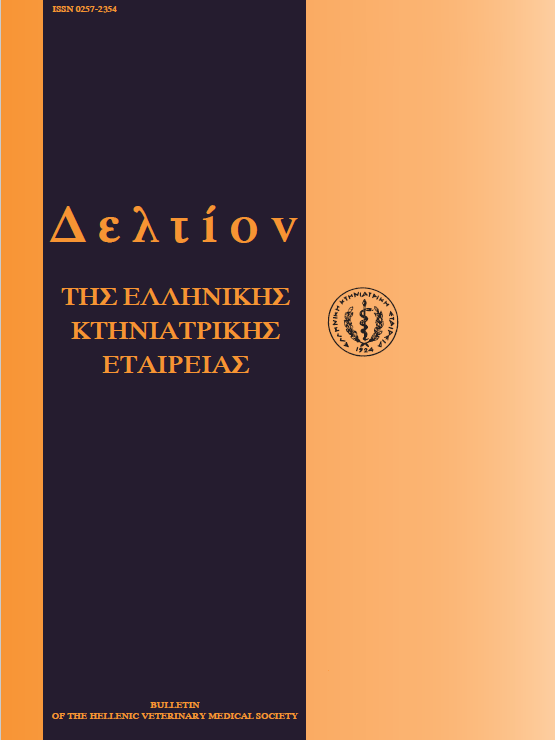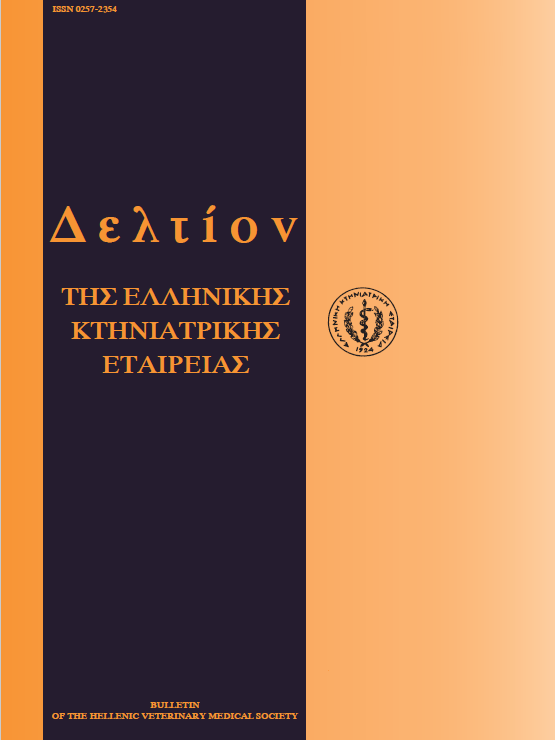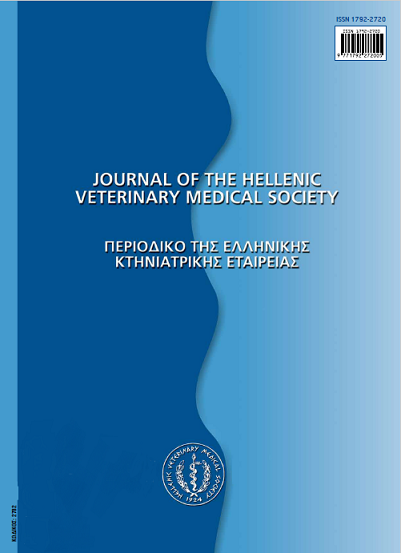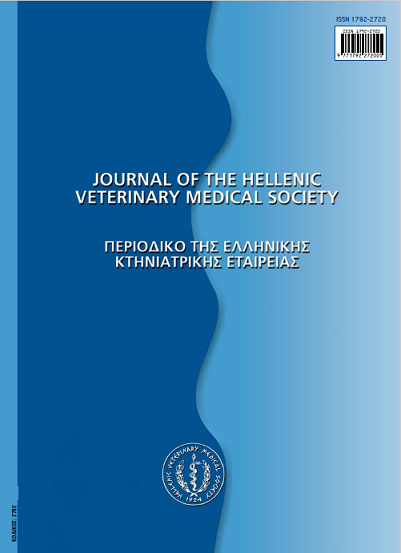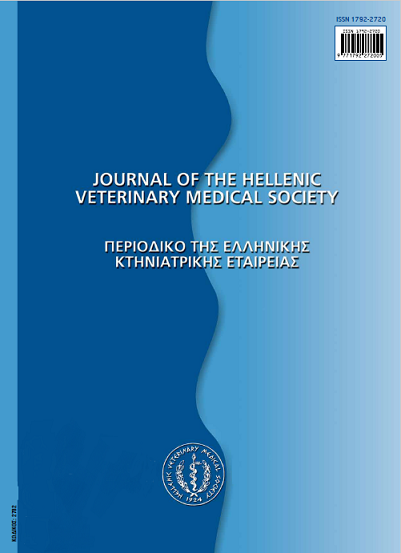Metabolie epidermal necrosis (hepatocutaneous syndrome) in the dog: A clinical and pathological review of 6 spontaneous cases
Abstract
Metabolic epidermal necrosis was diagnosed in 6 dogs admitted to the Clinic of Companion Animal Medicine, Faculty of Veterinary Medicine, A.U.T., between 1989 and 1998. Four of these animals were males and 2 females with an age range of 8 to 11.5 years. Bilaterally symmetrical (5/6) or asymmetrical (1/6) skin lesions characterized by alopecia – hypotrichosis (5/6), erythema (6/6), depigmentation (3/6), epidermal colarettes (3/6), ulcers and erosions (6/6), crusts (6/6), footpad and nose hyperkeratosis (5/6), edema (4/6), exudation (3/6), pustules (2/6), scales (2/6) and papules (1/6) were observed in all of the dogs. These lesions were located on the limbs (6/6), the external genitalia (5/6), ventral abdomen (4/6), mucocutaneos junctions (4/6), pressure points (3/6), distal extremities (3/6), nasal philthrum (3/6), muzzle (2/6), axillae (1/6) and on the dorsal aspect of the body trunk (1/6). The most important clinicopathologic findings included anemia (5/6), leucocytosis (3/6), thrombocytopenia (1/6), hypoalbuminaemia (4/5), hyperglycemia (3/6), increased alkaline phosphatase (4/6) and alanino-aminotransferase (5/6) activities, hypocalcaemia (2/5), proteinuria (1/6) and glycosuria (3/6). Liver histopathology, carried out in 4 dogs, revealed vacuolar hepatopathy in all of them. The same underlying disease was suspected in one additional case, whereas pancreatic glucagonoma was a possibility for the remaining dog. Systemic an/or topical treatment, that was attempted in 3 dogs, was unrewarding. All the 6 dogs died (3/6) or were euthanized (3/6) 2 to 17 months after the appearance of the skin lesions.
Article Details
- Zitationsvorschlag
-
KOUTINAS (X.K. ΚΟΥΤΙΝΑΣ) C. K., KOUTINAS (Α.Φ. ΚΟΥΤΙΝΑΣ) A. F., SARIDOMICHELAKIS (Μ.Ν. ΣΑΡΙΔΟΜΙΧΕΛΑΚΗΣ) M. N., KALDRYMIDOU (Ε. ΚΑΛΔΡΥΜΙΔΟΥ) H., & ROUBIES (Ν. ΡΟΥΜΠΙΕΣ) N. (2018). Metabolie epidermal necrosis (hepatocutaneous syndrome) in the dog: A clinical and pathological review of 6 spontaneous cases. Journal of the Hellenic Veterinary Medical Society, 52(1), 37–48. https://doi.org/10.12681/jhvms.15406
- Ausgabe
- Bd. 52 Nr. 1 (2001)
- Rubrik
- Case Report

Dieses Werk steht unter der Lizenz Creative Commons Namensnennung - Nicht-kommerziell 4.0 International.
Authors who publish with this journal agree to the following terms:
· Authors retain copyright and grant the journal right of first publication with the work simultaneously licensed under a Creative Commons Attribution Non-Commercial License that allows others to share the work with an acknowledgement of the work's authorship and initial publication in this journal.
· Authors are able to enter into separate, additional contractual arrangements for the non-exclusive distribution of the journal's published version of the work (e.g. post it to an institutional repository or publish it in a book), with an acknowledgement of its initial publication in this journal.
· Authors are permitted and encouraged to post their work online (preferably in institutional repositories or on their website) prior to and during the submission process, as it can lead to productive exchanges, as well as earlier and greater citation of published work.

